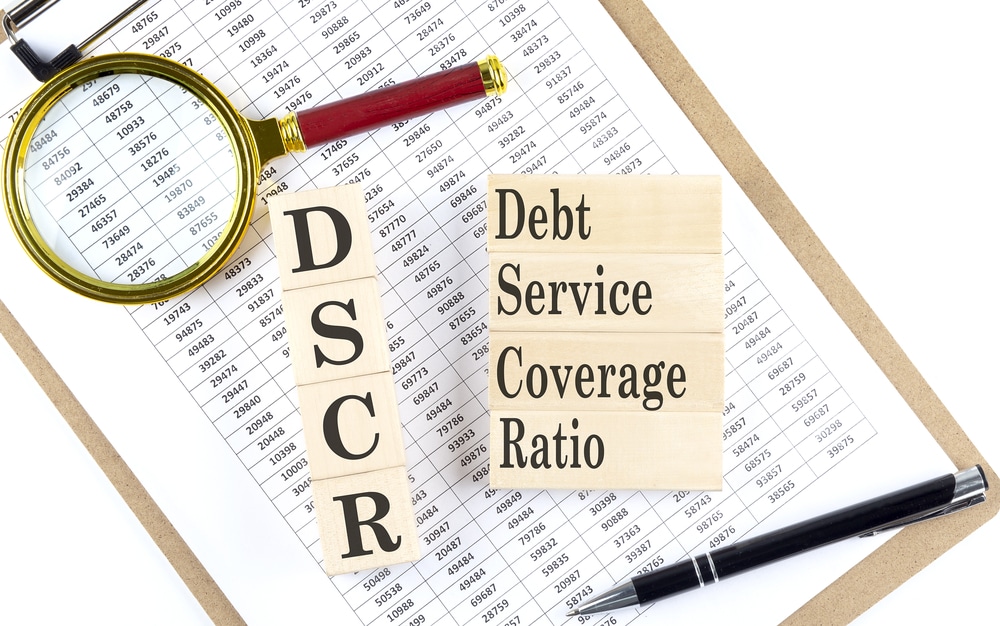In the dynamic landscape of business financing, Debt Service Coverage Ratio (DSCR) loans stand out as a unique, robust, and advantageous offering.
DSCR, or Debt Service Coverage Ratio, is a calculated metric used by lenders to determine a business’s ability to cover its debt payments. In simple terms, it’s a ratio that compares an entity’s net operating income with its total debt service, providing a snapshot of its financial health.
Loans based on DSCR are instrumental for businesses seeking funding, especially those with substantial income from assets such as real estate.
In these scenarios, the strength of a business’s cash flow, rather than the individual borrower’s creditworthiness, becomes the decisive factor for lending decisions.But, as with any financial product, adhering to regulatory compliance is of paramount importance. This is where the TILA-RESPA Integrated Disclosure (TRID) rule comes into play.
A regulation established by the Consumer Financial Protection Bureau (CFPB), TRID was designed to ensure consumers receive clear, understandable, and reliable information about the mortgage loans they are offered.
The rule mandates transparency, with the aim of empowering borrowers to make informed decisions and avoid surprises at the closing table. Therefore, TRID compliance in DSCR loans isn’t just a regulatory requirement—it’s a trust-building exercise that establishes the credibility of lenders and safeguards the interests of borrowers.
The objective of this article is to demystify the somewhat complex terrain of TRID compliance, specifically within the context of DSCR loans.
We aim to highlight and explain the best practices lenders can employ to remain on the right side of regulations while also building robust and mutually beneficial relationships with their clients. So, whether you’re a seasoned lender, a loan officer, or an interested party in the world of finance, stick with us as we navigate this intriguing topic.
Understanding TRID
The TILA-RESPA Integrated Disclosure (TRID) rule was born out of a necessity to streamline and consolidate the mortgage loan disclosure process.
Prior to its inception, lenders were obligated to comply with two federal statutes: the Truth in Lending Act (TILA) and the Real Estate Settlement Procedures Act (RESPA).
Each of these laws required different disclosure forms, which often led to confusion and a lack of transparency for consumers.
To simplify this process, the Consumer Financial Protection Bureau (CFPB), a U.S. government agency tasked with consumer protection in the financial sector, integrated the TILA and RESPA forms into a cohesive, standardized set of disclosures. Thus, the TRID rule came into effect in October 2015.
The CFPB plays a vital role in the implementation and enforcement of TRID regulations. The agency sets the standards for what information must be disclosed, how it should be presented, and when it must be delivered to the borrower.
They also have the authority to take enforcement actions against lenders that fail to comply with these regulations, further underscoring the importance of strict adherence to TRID rules.TRID is fundamentally about consumer protection. It requires that lenders provide borrowers with a Loan Estimate (LE) within three business days of receiving a loan application.
The LE gives borrowers a clear, easy-to-understand overview of the key features, costs, and risks of the mortgage loan for which they have applied.
Additionally, TRID mandates the delivery of a Closing Disclosure (CD) to borrowers at least three business days before the loan closing.
The CD includes final loan terms and costs, giving borrowers time to understand and consider their financial commitment before concluding the transaction.
In essence, TRID ensures a borrower’s right to transparency and information, enabling them to make well-informed financial decisions. This regulatory framework not only protects consumers but also fosters a healthier, more trustworthy lending environment.
The Relevance of TRID in DSCR Loans
 The DSCR loan process begins with the lender evaluating a potential borrower’s ability to service their debt using income generated from the property in question.
The DSCR loan process begins with the lender evaluating a potential borrower’s ability to service their debt using income generated from the property in question.
This evaluation is based on the Debt Service Coverage Ratio (DSCR), a key metric that measures the cash flow available to cover debt obligations.
Calculating the DSCR involves dividing the net operating income (NOI) of the property by the total debt service (the sum of all principal, interest, and lease payments over a specified period).
If the resulting ratio is greater than 1, it signifies that the property generates enough income to cover its debt obligations. Conversely, a DSCR less than 1 indicates that the property’s income is insufficient to service its debt.
Now, how does TRID compliance weave into this process? Well, the TRID rule applies to most closed-end consumer credit transactions secured by real property.
Therefore, if a DSCR loan is extended to an individual or an entity that is primarily considered a consumer, then TRID requirements apply.
In the DSCR loan process, TRID compliance plays a critical role for both lenders and borrowers.
For lenders, adhering to TRID means providing clear, timely, and accurate disclosures about the terms and cost of loans. By doing so, they not only meet regulatory requirements but also foster a sense of trust and transparency with their borrowers.
For borrowers, TRID compliance assures them of their right to understand the financial commitments they are making. It gives them ample time to review, question, and understand the details of their loan agreement, thus enabling them to make well-informed decisions.
In the case of DSCR loans, where the property’s income is a major determining factor for loan approval, this understanding is particularly vital. The intersection of TRID and DSCR loans underscores a commitment to transparency and consumer protection.
It underlines the importance of providing borrowers with all the necessary information they need to understand their financial commitments while simultaneously ensuring lenders of a transparent and trusting borrowing-lending environment.
Key TRID Compliance Requirements
The role of the Loan Estimate and Closing Disclosure cannot be overstated. The timeliness and accuracy of these documents not only drive TRID compliance, but they also foster a transparent, fair, and trustworthy mortgage lending environment.
By understanding and adhering to these requirements, lenders can deliver a smoother, more predictable loan process for all parties involved.
Loan Estimate (LE)
At the heart of TRID compliance is the Loan Estimate (LE), a standardized three-page form that simplifies the information a borrower needs to process. The LE should provide a precise breakdown of the mortgage loan, detailing its terms, projected payments, and total closing costs.
Lenders are required to deliver or mail the LE to the prospective borrower within three business days after receiving the loan application. This obligation holds even if the application is still under review or pending approval.
The LE is critical because it empowers borrowers to compare offers from different lenders, understand the costs, and make an informed decision.
Closing Disclosure (CD)
The Closing Disclosure (CD) is another critical aspect of TRID compliance. This five-page document outlines the final terms and costs of the mortgage loan.
The CD is similar to the LE in its format, but it includes the finalized details of the transaction.
For instance, it shows the loan amount, interest rate, monthly principal, and interest, as well as any prepayment penalties or balloon payments if applicable.
Lenders must provide the CD to the borrower at least three business days before the loan closing.
This requirement gives borrowers sufficient time to compare the CD with the LE, ensuring that the final terms align with their expectations. If the borrower requests changes during this three-day period, it may trigger a new three-day review and delay the closing.
The Importance of Timing and Accuracy
Timing and accuracy in these disclosures form the bedrock of TRID compliance.
The CFPB’s strict timelines—three business days for the LE post-application, and three business days for the CD pre-closing—are in place to ensure borrowers have enough time to fully comprehend their mortgage loan’s terms and costs.
Accuracy is equally crucial. Lenders must ensure the figures provided in the LE and CD are precise, with no room for hidden fees or surprise charges. There are regulations in place that limit the extent to which the actual charges at closing can exceed the estimates given.
Best Practices for TRID Compliance in DSCR Loans
Training of Loan Officers
The journey to TRID compliance begins with a well-educated team. Loan officers should undergo thorough training about the ins and outs of TRID regulations, as well as their specific roles in maintaining compliance.
This training should cover a comprehensive understanding of Loan Estimates (LE) and Closing Disclosures (CD), the specific timing requirements for these documents, and the repercussions of non-compliance. Continual training should be encouraged to keep loan officers abreast of any regulatory changes.
The role of loan officers is critical, and their comprehensive training should include:
- Understanding Key TRID Documents: Loan officers need a thorough understanding of Loan Estimate (LE) and Closing Disclosure (CD) forms. They should be able to generate these documents accurately, including the correct information needed by borrowers.
- Timing Requirements: The training should emphasize the criticality of timing in TRID compliance. Officers should know the three-business-day rule for delivering both the LE following an application and the CD prior to closing.
- Continual Education: Given the dynamic nature of financial regulations, ongoing training is necessary. Regular workshops, seminars, or online courses can help keep loan officers up to date with regulatory changes.
- Understanding Non-Compliance Consequences: The training should stress the potential repercussions of non-compliance, such as fines, legal issues, and reputational damage. This will underscore the importance of adherence to regulations.
- Communication and Customer Service Skills: Beyond the technicalities of TRID compliance, loan officers should also be trained in soft skills. Clear communication and excellent customer service are key in explaining information to borrowers and addressing their queries effectively.
Maintaining Updated Policies and Procedures
Lenders should regularly update their policies and procedures to align with any changes in TRID regulations. An updated, written policy helps provide a roadmap for staff, reducing the likelihood of errors.
The policies should outline the specific steps to be taken at each stage of the loan process, emphasizing the need for accurate and timely disclosure preparation, delivery, and record-keeping.
To ensure TRID compliance, it’s vital that lenders regularly review and revise their policies and procedures to align with any changes in TRID regulations.
Keeping policies current is more than just a good practice; it’s a fundamental requirement in creating a culture of compliance within an organization.
-
Creating Comprehensive Policies
Firstly, these policies should be clearly written and comprehensive, detailing all aspects of the lending process affected by TRID.
They should provide a step-by-step guide for staff on how to process loans from the application stage through closing, with clear instructions on creating, reviewing, and delivering the Loan Estimate (LE) and Closing Disclosure (CD).
-
Emphasizing Accuracy and Timing
The policies should emphasize the need for accuracy and timely disclosure preparation, delivery, and record-keeping.
By laying out detailed procedures and setting strict timelines, lenders can minimize the risk of violations that could stem from inaccurate disclosures or delays in providing them.
-
Continuous Training and Policy Updates
Regular training sessions should be conducted to ensure all employees understand the policies and their responsibilities within the lending process.
Any time there’s an update to the policies, the changes should be communicated promptly to the relevant teams.
This not only reinforces the importance of the policies but also ensures that everyone is on the same page, further reducing the likelihood of errors.
-
Responding to Regulatory Changes
Since TRID regulations can and do change, lenders must stay informed about updates from the Consumer Financial Protection Bureau (CFPB).
Upon learning of a change, lenders should immediately review and update their policies accordingly. This proactive approach ensures continuous compliance with the most recent standards.
Precise Record-Keeping
Accuracy in record-keeping is vital to demonstrate TRID compliance. Lenders should maintain records that reflect the receipt and delivery of the LE and CD, the dates these documents were sent, and the borrower’s intent to proceed with the loan.
Investing in a document retention system can help streamline this process and ensure the ready availability of records during compliance audits.
Lenders should maintain records that reflect the entire lending process, starting from the receipt of the loan application through to the final closing.
These Records Should Include:
- Dates of document delivery: The LE must be provided within three business days of receiving the loan application, while the CD must be delivered at least three business days before closing. Keeping a record of when these documents were sent helps demonstrate that these timelines were adhered to.
- Receipt of LE and CD: Evidence of the borrower’s receipt of the LE and CD should be retained. This could be an electronic confirmation, such as an email receipt or read receipt, or a signed acknowledgment from the borrower.
- Borrower’s intent to proceed: The borrower’s intent to proceed with the loan must be documented. This is typically expressed after the borrower has had a chance to review the LE but before any fees (other than a reasonable fee for obtaining the consumer’s credit report) are collected.
- Changes in loan terms: If there are changes to the loan terms that require a revised LE or CD, these changes and the reasons for them should be recorded.
Staying Informed about CFPB Updates
The Consumer Financial Protection Bureau (CFPB) frequently updates TRID regulations to improve the lending process and better protect consumers.
Lenders should make it a best practice to stay informed about these updates and adjust their policies accordingly.
The Bureau frequently updates TRID regulations to better protect consumers and improve the lending process, reflecting changes in market conditions, technological advancements, or legislative amendments.
As a lender, staying updated with these changes is essential to ensuring ongoing TRID compliance.
Subscribing to CFPB Updates
The CFPB offers various resources that allow lenders to stay informed about updates to TRID regulations.
One of the most direct ways is to subscribe to CFPB updates, which provide timely and accurate information about regulatory changes, interpretive rules, and implementation guides.
By doing so, lenders can receive firsthand information on any amendments and adjust their processes accordingly.
Attending Industry Webinars and Trainings
The CFPB and other industry bodies often conduct webinars and training sessions to provide clarifications and guidance on new updates.
These sessions offer an excellent opportunity to understand the practical implications of changes and to ask questions directly to the experts.
Additionally, they provide a forum to share experiences and learn from other industry professionals.
Engaging with a Compliance Consultant
Engaging a compliance consultant can be invaluable, especially for complex regulatory updates.
Compliance consultants have specialized knowledge of the regulatory landscape and can provide personalized guidance based on the lender’s specific operational context.
They can also help review and update policies and procedures to ensure alignment with the new rules.
Creating an Internal Regulatory Update Process
Beyond these external resources, lenders should also consider developing an internal process to stay updated on CFPB changes.
This could involve designating a compliance officer or a team responsible for tracking regulatory updates, interpreting their implications, and implementing necessary changes in the organization.
Transparency and Consistency in Disclosures
One of the primary goals of TRID is to promote transparency in mortgage lending. Lenders should aim to provide clear, consistent, and comprehensive disclosures about the terms and costs of loans.
These disclosures should be easily understandable, and any changes should be promptly communicated to borrowers. This practice promotes borrower trust and facilitates smooth transactions.
Promoting transparency in mortgage lending, a cornerstone of TRID, is achieved through:
- Clarity in Disclosures: Lenders should present information free of jargon and understandable to those without a financial background. Simplified language, clear formatting, and providing definitions for complex terms can significantly aid in this.
- Consistency: The information provided at the beginning of the loan process (LE) should align with what is provided at closing (CD). TRID regulations limit how much the final loan cost at closing can exceed the initial estimate, ensuring consistency.
- Comprehensive Disclosures: Lenders should give borrowers all the information they need to make informed decisions. This includes all loan-associated costs, interest rate, loan term, and any penalties or additional fees.
- Prompt Communication of Changes: If loan terms or costs change, the lender should issue a revised LE or CD promptly. This ensures borrowers are aware of and can understand any changes to their loan commitments before closing.
Regular Internal Reviews and Audits
Implementing regular internal reviews and audits can help identify any potential issues of non-compliance before they become problematic.
These audits should verify the timely and accurate delivery of LEs and CDs, proper record-keeping, and the adherence of all practices to updated TRID regulations.
By employing these best practices, lenders can maintain TRID compliance in DSCR loans, ensuring a transparent, trustworthy, and efficient lending process that benefits both them and their borrowers:
- Identification of Non-Compliance Issues: Regular internal reviews help identify any potential issues of non-compliance in a timely manner. By promptly identifying and rectifying these issues, lenders can avoid costly violations and maintain a smooth loan process.
- Verification of LE and CD Delivery: Audits should consistently verify the timely and accurate delivery of Loan Estimates (LE) and Closing Disclosures (CD). This process checks that LEs are delivered within three business days after receiving a loan application, and CDs are delivered at least three business days before loan closing.
- Review of Record-Keeping Practices: Regular audits should assess the lender’s record-keeping practices. This involves reviewing records to ensure they correctly reflect the receipt and delivery of LE and CD, the dates these documents were sent, and the borrower’s intent to proceed with the loan.
- Adherence to TRID Regulations: Audits also ensure all practices adhere to the updated TRID regulations. This includes the lender’s policies and procedures, staff training, and borrower education.
- Ongoing Improvement: Regular audits allow lenders to continually improve their processes. Audit findings can highlight areas for improvement and help develop action plans to enhance compliance and efficiency.
The Role of Technology in TRID Compliance
In today’s digital age, technology plays a significant role in streamlining complex processes and ensuring compliance, and TRID regulations are no exception.
There are software solutions and automated tools specifically designed to help lenders adhere to TRID rules.
For example, loan origination systems (LOS) often have built-in features to automate the generation of Loan Estimates (LE) and Closing Disclosures (CD), ensuring accuracy and timeliness.
Automated compliance checks can flag potential TRID violations before they become an issue, providing an extra layer of protection.
Document retention systems can securely store records of LE and CD delivery, easing the burden of record-keeping.
Further, the use of Application Programming Interfaces (APIs) can integrate disparate systems, enabling smoother and quicker data transfer between internal and external parties.
This can significantly reduce the potential for errors and improve the efficiency of the loan process.
Through the strategic implementation of technology, lenders can create a more streamlined, error-free process, which not only ensures TRID compliance but also enhances the overall borrower experience.
Final Thoughts
The importance of TRID compliance for DSCR loans cannot be overstated.
TRID regulations were designed to bring transparency to the mortgage lending process, providing borrowers with the information they need to make informed financial decisions.
Adherence to these regulations builds trust between lenders and borrowers and fosters a healthy lending environment.
Maintaining compliance in DSCR loans involves understanding and adhering to key TRID requirements, such as the Loan Estimate (LE) and Closing Disclosure (CD).
It requires training loan officers, maintaining updated policies, precise record-keeping, staying informed about CFPB updates, ensuring transparency and consistency in disclosures, and conducting regular internal reviews and audits.
Finally, in our modern age, technology has emerged as a valuable ally in TRID compliance.
Through the implementation of software solutions and automated tools, lenders can simplify and strengthen their compliance procedures, paving the way for better lender-borrower relationships.
As we continue to navigate the intricacies of the financial landscape, one thing remains clear: Compliance isn’t merely about meeting regulatory requirements; it’s about establishing credibility, ensuring transparency, and ultimately, protecting the interests of borrowers in the ever-evolving world of mortgage lending.
At Sprint Funding, we strive to provide our customers with the transparency and accuracy they need to make informed decisions about their mortgage loans.
If you’re ready to take the next step in securing your home loan, contact us today or visit our website for more information about how we can help you achieve your homeownership goals.
Don’t wait to get started – the process is easier than ever with Sprint Funding!





